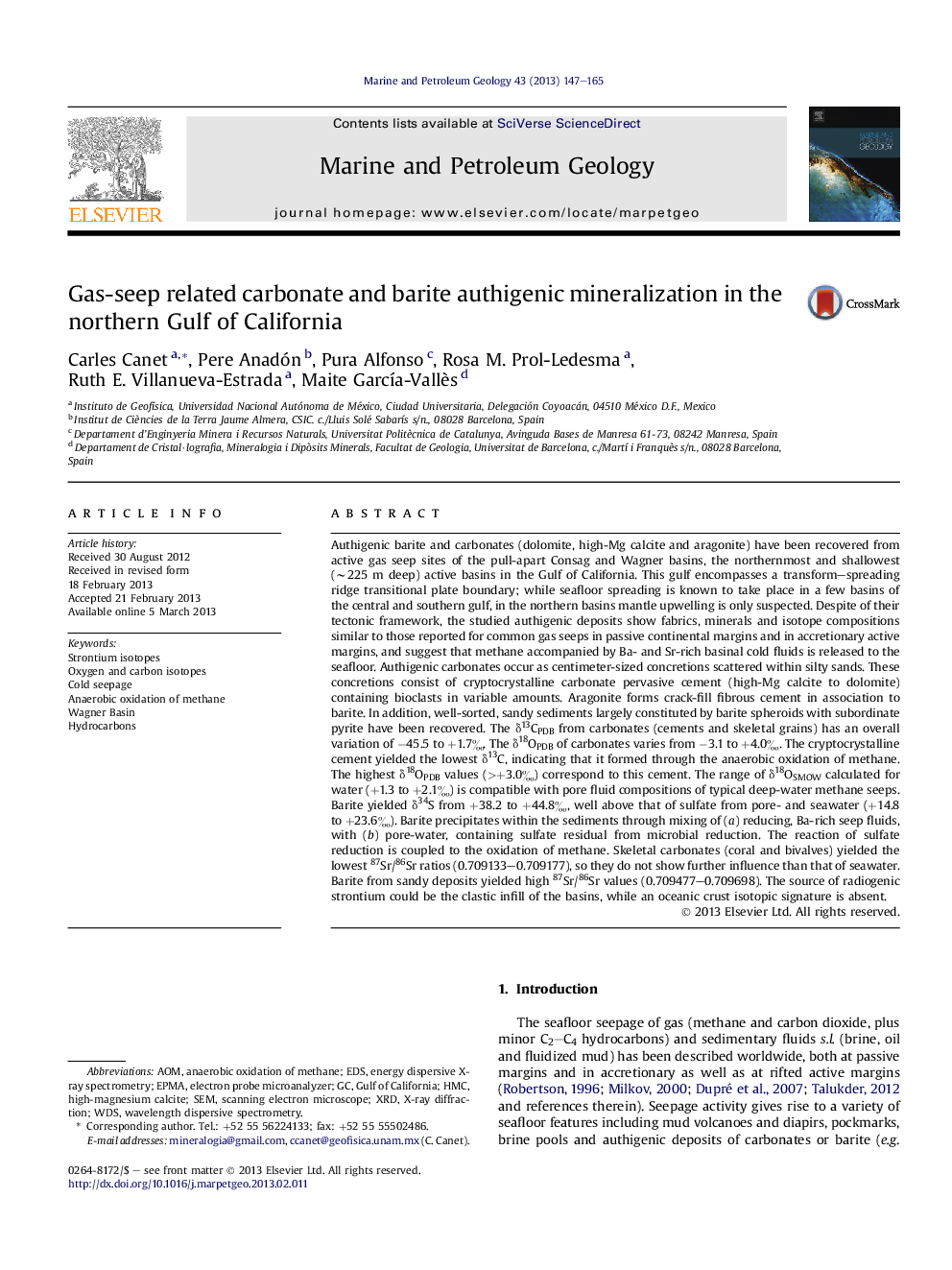| Article ID | Journal | Published Year | Pages | File Type |
|---|---|---|---|---|
| 6435520 | Marine and Petroleum Geology | 2013 | 19 Pages |
Authigenic barite and carbonates (dolomite, high-Mg calcite and aragonite) have been recovered from active gas seep sites of the pull-apart Consag and Wagner basins, the northernmost and shallowest (â¼225 m deep) active basins in the Gulf of California. This gulf encompasses a transform-spreading ridge transitional plate boundary; while seafloor spreading is known to take place in a few basins of the central and southern gulf, in the northern basins mantle upwelling is only suspected. Despite of their tectonic framework, the studied authigenic deposits show fabrics, minerals and isotope compositions similar to those reported for common gas seeps in passive continental margins and in accretionary active margins, and suggest that methane accompanied by Ba- and Sr-rich basinal cold fluids is released to the seafloor. Authigenic carbonates occur as centimeter-sized concretions scattered within silty sands. These concretions consist of cryptocrystalline carbonate pervasive cement (high-Mg calcite to dolomite) containing bioclasts in variable amounts. Aragonite forms crack-fill fibrous cement in association to barite. In addition, well-sorted, sandy sediments largely constituted by barite spheroids with subordinate pyrite have been recovered. The δ13CPDB from carbonates (cements and skeletal grains) has an overall variation of â45.5 to +1.7â°. The δ18OPDB of carbonates varies from â3.1 to +4.0â°. The cryptocrystalline cement yielded the lowest δ13C, indicating that it formed through the anaerobic oxidation of methane. The highest δ18OPDB values (>+3.0â°) correspond to this cement. The range of δ18OSMOW calculated for water (+1.3 to +2.1â°) is compatible with pore fluid compositions of typical deep-water methane seeps. Barite yielded δ34S from +38.2 to +44.8â°, well above that of sulfate from pore- and seawater (+14.8 to +23.6â°). Barite precipitates within the sediments through mixing of (a) reducing, Ba-rich seep fluids, with (b) pore-water, containing sulfate residual from microbial reduction. The reaction of sulfate reduction is coupled to the oxidation of methane. Skeletal carbonates (coral and bivalves) yielded the lowest 87Sr/86Sr ratios (0.709133-0.709177), so they do not show further influence than that of seawater. Barite from sandy deposits yielded high 87Sr/86Sr values (0.709477-0.709698). The source of radiogenic strontium could be the clastic infill of the basins, while an oceanic crust isotopic signature is absent.
⺠Carbonates and barite occur around shallow gas seeps at a transform plate boundary. ⺠Textures, minerals and isotope ratios are similar to those of common methane seeps. ⺠Carbonates are 13C-depleted and form through anaerobic oxidation of methane. ⺠Barite forms from Ba-rich fluids plus sulfate residual after microbial reduction. ⺠An oceanic crust Sr isotopic signature is absent in the gas seep-related minerals.
